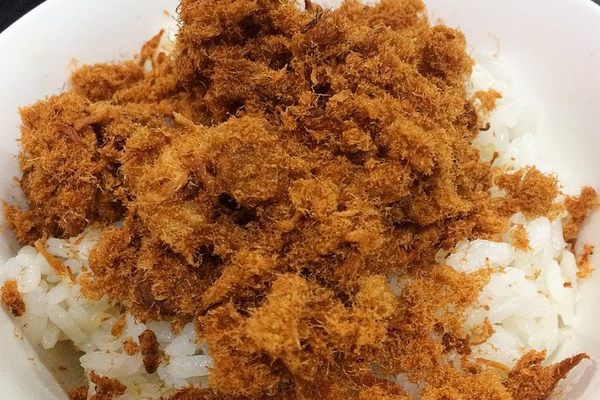Ingredients & Condiments
Maggi Seasoning
This condiment proves that what the world considers delicious is (nearly) universal.
The dark brown, salty seasoning called Maggi can be found everywhere from Swiss restaurants to Himalayan checkpoints. Both global and local, the condiment adds a savory splash to ceviche, eggs, and drunken noodles. But Julius Maggi, the Swiss entrepreneur who invented the flavoring, only intended to help working women improve the taste of soup.
This little yellow bottle has traveled a long way since Maggi began conceptualizing this unique flavor in 1863. At the time, women were entering the workforce and had less time to cook. When the government tasked Maggi with creating a fast, nutritious meal, he cooked up a series of instant soups, which he marketed as a form of women’s emancipation.
While his soups weren’t initially popular, Maggi kept tinkering with the formula. He rolled out concentrated bouillon cubes, pre-packaged noodles, and then, in 1887, a liquid seasoning made of fermented wheat: Maggi. Given its low cost and ability to enhance any savory flavor, Maggi earned a place on cooks’ shelves around the world.
Every bottle of Maggi adds a savory, umami flavor to dishes, but the tasting notes vary from country to country and continent to continent. Filipinos enjoy a garlic-heavy variation. Mexicans can buy a version that has lime. And Poles buy Maggie that is light brown and saltier.
Maggi is now mass-produced by Nestle for a global market. But its many variations make it feel homegrown and local. The condiment is renowned for making dishes taste better with just a few drops—proof that the human conception of deliciousness is nearly, but not quite, universal.
Written By
 paulamejia
paulamejia
Sources
- www.thespruce.com/maggi-special-seasoning-from-switzerland-1446943
- www.cooksinfo.com/maggi
- www.nytimes.com/2008/03/05/dining/05glute.html
- qz.com/337224/how-maggi-noodles-became-indias-favourite-comfort-food/
- books.google.com/books?id=UtA6-pyGJmMC&pg=PA61&lpg=PA61&dq=why+did+julius+maggi+invent+maggi&source=bl&ots=7GzVfZ3L91&sig=hE6I4C4sMcMkbFiamdeJtkPpN2g&hl=en&sa=X&ved=0ahUKEwiVqfaA_Z3XAhXr6YMKHf6rCy84ChDoAQgvMAI#v=onepage&q=why%20did%20julius%20maggi%20invent%20maggi&f=false
- www.thekitchn.com/ingredient-spotlight-maggi-sea-91316
- www.grubstreet.com/2012/03/flavor-ammo-maggi-seasoning.html
- www.chicagotribune.com/dining/ct-maggi-the-secret-sauce-you-should-know-about-20150810-story.html














